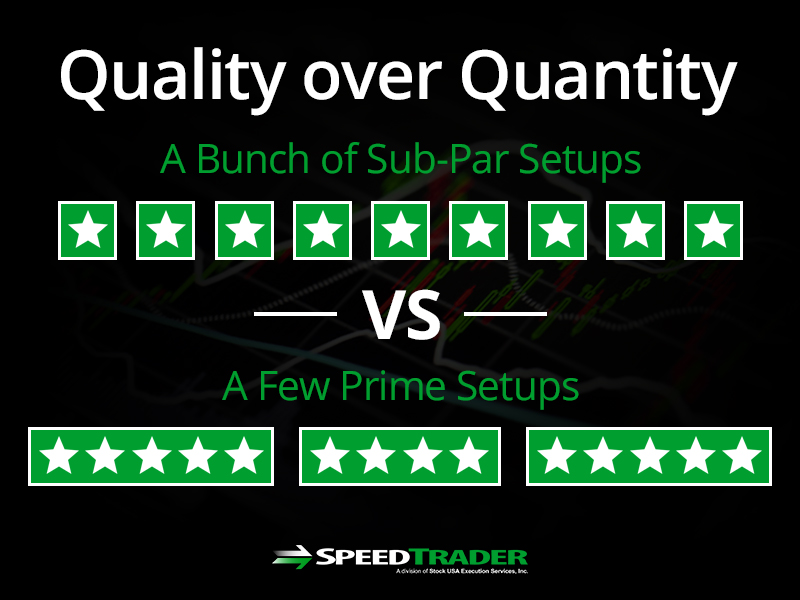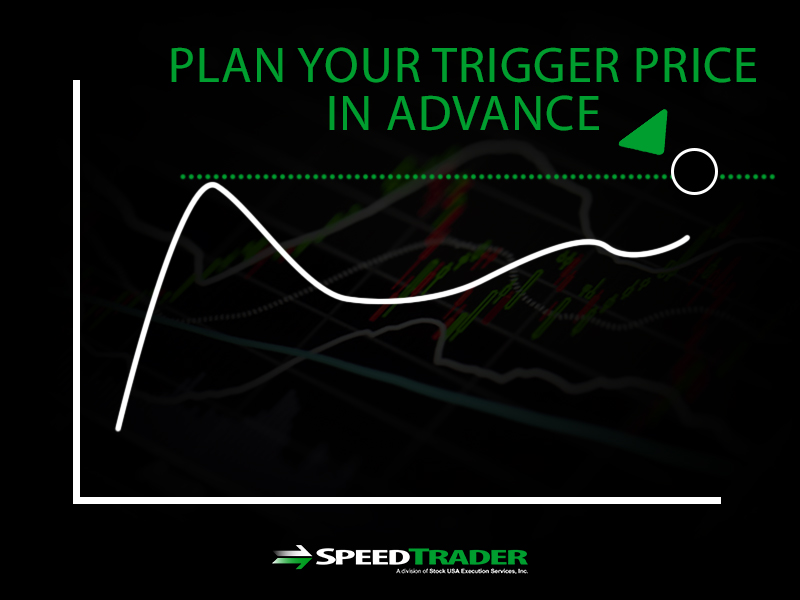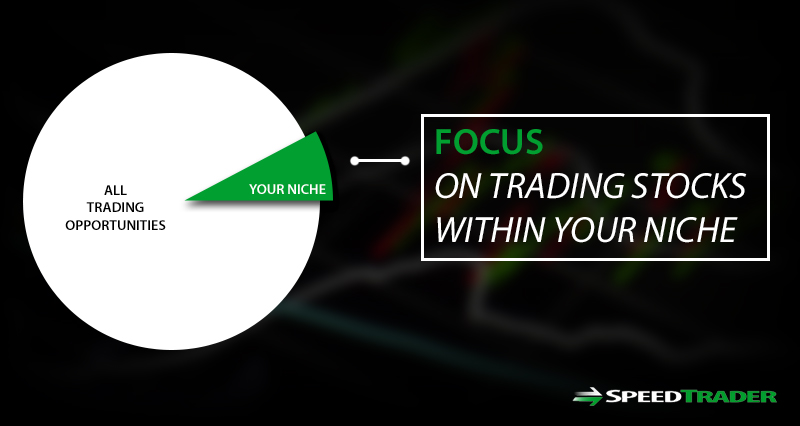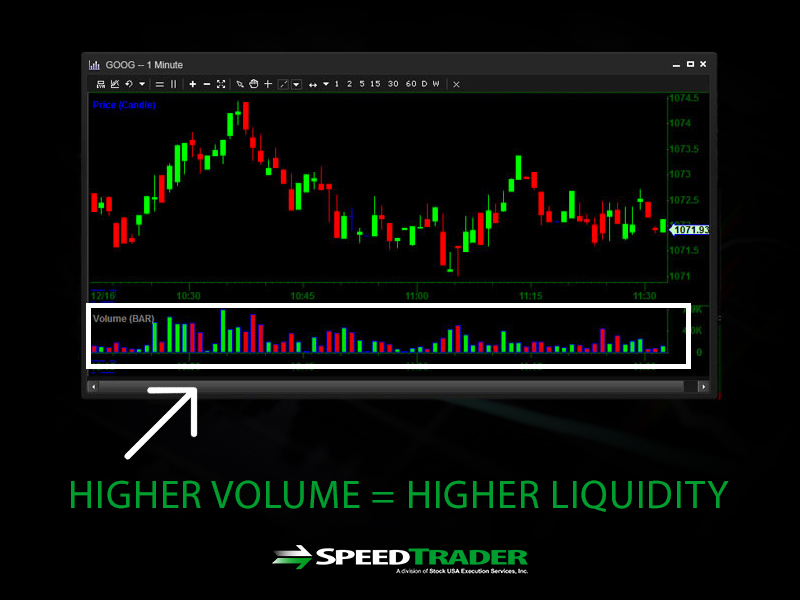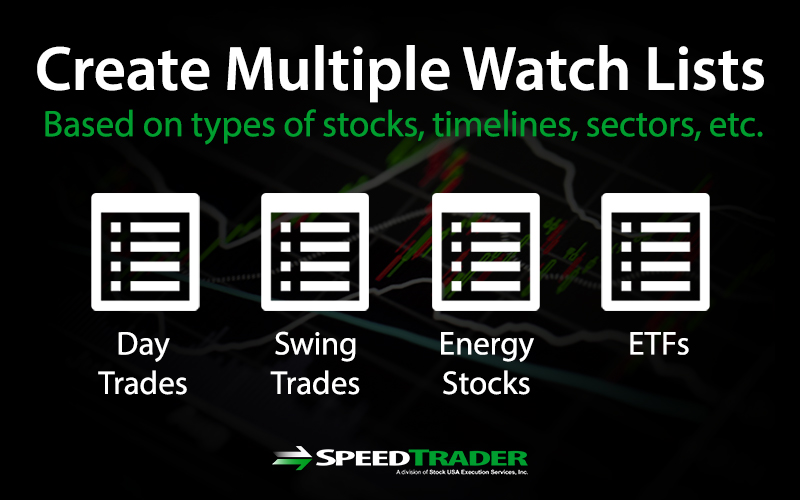What is the Purpose of a Watch List?
A watch list is a filtered selection of stocks to focus on during the trading day. Focus is the key word. The purpose of a watch list is to ready the trader so he can react quickly if and when a trade signal triggers. Stocks can trigger trade signals simultaneously and any delay in reacting can result in missed entries and exits. A watch list helps to prepare the trader ahead of time so there is no delay when a signal forms. By focusing on a few stocks versus the entire market, he has a better change of capturing moves early rather than chasing too late. A strong watch list will enable you to also diversify your opportunities throughout the day, especially when one or two stocks are duds.
One of the worst maladies plaguing traders is the habit of spreading themselves too thin with too many stocks and impulsively jumping on anything that moves. This leads to over trading, impulse trading and revenge trading which can propel the trader into “tilt” mode. Of course, the markets love this.
How to Make Better Stock Watch Lists
Half the battle when trading is selecting the right stocks to trade. A good stock watch list contains tradable stocks you are familiar with and have properly researched technically and possibly fundamentally. In other words, you have prepared each stock; just as a master chef carefully gathers and preps ingredients before creating the meal.
Start Your Watch List Post-Market and Finalize Pre-Market
Companies release news and earnings reports after the market close. Use various post market gap scans to jot down stocks making headlines accompanied by a price gap up or down. A stock may trade up in the post-market and then sell off the next morning during pre-market. Therefore, it’s prudent just to note stocks to consider for watch list in post-market but actually research and finalize the technical analysis during the pre-market, if it is still viable.
Limit the Number of Stocks
To avoid spreading yourself too thin, it’s best to keep your finalized watch list limited to five to 10 stocks at most. Less is more in this sense. As you get more seasoned with stocks, you may want to segment different watch lists. When a sector leader stock is on your watch list, it also presents potential opportunities to consider trading the lower tier peer stocks depending on how strong the leader’s move is. Sentiment spreads from the top down in strong or weak market sectors. This presents opportunities to play the laggard peers utilizing the sector leaders.
Plan Out Trade Triggers Ahead of Time
Every stock on your watch list should have potential trade triggers planned out ahead of time, or else, why put them on the watch list to begin with? Analysis should include the pattern set-up, support and resistance levels, and price and indicator triggers. Get the legwork done in the pre-market so there is no delay if a trigger forms. Every stock should be “shovel ready” when your analysis is completed. This is where the real work lies.
This information should be noted either on the chart or a notebook. Utilize multiple time frames in your analysis of technicals for a more complete perspective of the playing field. Quantify what price and or indicator set-up would trigger a buy/sell signal. Determine how many shares you would play and what would trigger a stop-loss.
Add Stocks That Fit Your Style
Be very honest with your style of trading, which is often based on your temperament. If you are an intra-day scalper, then you want stocks with good volatility, momentum and follow through. Stocks that are gapping on news or a catalyst event are best suited for you. Shorter time frame charts are also more useful for scalping.
Swing traders may be more comfortable with slower moving stocks with less volatility, which allows for longer holding periods. Wider time frame charts including the 60-minute, daily, weekly and monthly tends to fit better. If you have a bread-n-butter set-up, then look to add mostly stocks that may trigger that particular pattern.
Pay Attention to Volume and Liquidity
Volume tends to ensure liquidity. Liquidity overrides price. A tradable stock needs to have both or else the slippage alone will place you at a disadvantage. It’s very easy to get “sucked” into the market from watching too closely. Volume is a truth serum. If there is no volume, then move on to the next stock on your watch list.
Be Selective for Only The Best Opportunities and Set-Ups
This sounds like common sense, but it’s too easy to get sidetracked and end up curve fitting or justifying mediocre set-ups. Try to define three prime pattern set-ups with triggers and filter based on those. Seasoned traders are efficiency experts. Wasting time with mundane prospects results in lost opportunities.
Set Alerts for Intra-day and Swing Trades
Most trading platforms and charting programs allow the users set alerts. Make use of this technology so that you don’t have to constantly be monitoring too many stocks. Alerts based on price and or indicator(s) triggers are ideal. Make sure to distinguish day trading alerts and swing trade alerts. For example; set an alarm/alert if a particular stock breaks through $22.26, which happens to be a three-month trend line resistance. Alerts allow you to optimize your focus when needed. It’s very easy to be a “hoarder” and try to follow a cumulative watch list that has grown to over 200 stocks at once.
Creating Multiple Watch Lists
As you get more familiarized with more stocks, you will find your watch list growing rather large. At this point, it pays to diversify into multiple watch lists categorized by short-term (intra-day) stocks, swing plays, sector plays and long-term investment stocks. This helps to prioritize your time and attention where it is most needed.


